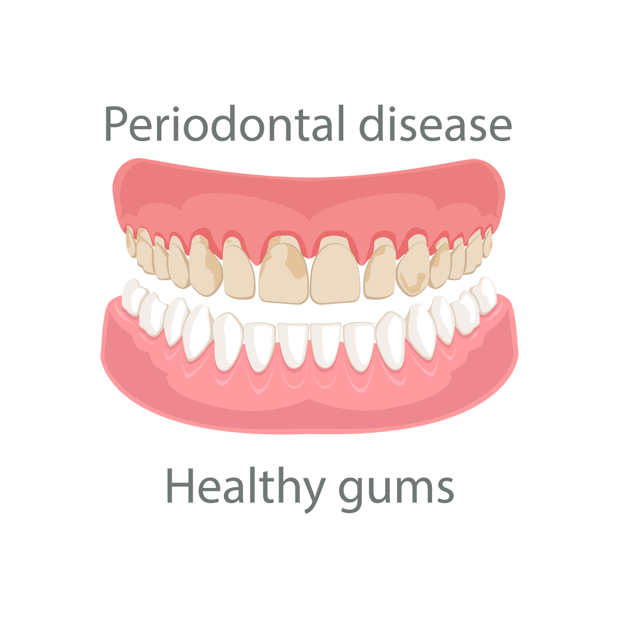
Gums Depigmented A confident smile is often considered one of the most captivating features of an individual. However, the presence of darkened or pigmented gums can cause self-consciousness and hinder a person’s willingness to express their happiness openly. Thankfully, gum depigmentation procedures have emerged as an effective solution to this common aesthetic concern.
What is Gums Depigmented:
Gums Depigmented In this article, we will delve into the world of gum depigmentation, exploring its causes, methods, benefits, and potential risks. By understanding this innovative cosmetic dentistry procedure, individuals can make informed decisions to restore their smile’s natural beauty and boost their self-esteem.
Understanding Gum Depigmentation:
Gum depigmentation, also known as gum bleaching or gum whitening, is a cosmetic dental procedure aimed at lightening or removing excess pigmentation from the gums. Dark or discolored gums can be caused by various factors, including genetic predisposition, certain medications, smoking, poor oral hygiene, and underlying health conditions. These pigmented gums can appear brown, black, or blue, leading to self-consciousness and a lack of confidence.
The Gum Depigmentation Process:
Gum depigmentation procedures involve removing the melanin or pigmented cells from the gums to achieve a more uniform and lighter appearance. Dentists typically employ three main methods for gum depigmentation: laser therapy, surgical stripping, and chemical agents.
- Laser Therapy: This method involves using a dental laser to remove the pigmented layer of the gums. The laser’s light energy targets and breaks down the melanin pigments, allowing for their removal. Laser therapy is precise, minimally invasive, and offers faster healing compared to other methods.
- Surgical Stripping: In this technique, the dentist uses a scalpel or a special tool to physically scrape away the pigmented layer from the gums. While effective, surgical stripping may require local anesthesia and can result in slight discomfort and longer healing times.
- Chemical Agents: Chemical agents like hydrogen peroxide or acid solutions are applied to the pigmented gums to lighten the color. This method is non-invasive but may require multiple sessions to achieve the desired results.
Benefits and Risks:
Gum depigmentation procedures offer several benefits beyond improving the aesthetic appearance of the gums. Firstly, these treatments help restore self-confidence and enhance overall smile aesthetics. Additionally, depigmented gums can provide a harmonious balance between the gums and teeth, resulting in a visually appealing smile. Moreover, the process can be a valuable part of a comprehensive treatment plan for individuals seeking smile makeovers or those preparing for other dental procedures like veneers or crowns.
However, like any medical or dental procedure, gum depigmentation carries potential risks. These may include temporary sensitivity, discomfort, or swelling following the treatment. In rare cases, patients may experience changes in gum texture, uneven pigmentation, or infection. It is crucial to consult with a qualified and experienced dental professional to discuss the procedure’s suitability and potential risks based on individual circumstances.
Conclusion:
Gum depigmentation procedures have revolutionized cosmetic dentistry, allowing individuals to regain their confidence and smile freely. By understanding the causes, methods, benefits, and potential risks associated with gum depigmentation, individuals can make informed decisions about pursuing this procedure. Remember, it is essential to consult with a skilled dentist who specializes in cosmetic dentistry to assess your specific needs and determine the most appropriate treatment approach. With gum depigmentation, individuals can achieve a more aesthetically pleasing smile, helping them embrace their natural beauty and radiate confidence in every interaction.
Gums Depigmented How Its Work?
Gum depigmentation is a cosmetic dental procedure aimed at lightening or removing excess pigmentation from the gums. The process involves targeting and eliminating the melanin or pigment cells that cause the darkened appearance of the gums. There are several methods used to perform gum depigmentation, including laser therapy, surgical stripping, and the use of chemical agents.

- Laser Therapy: Laser therapy is a popular and effective method for gum depigmentation. The dentist uses a dental laser that emits a concentrated beam of light. The laser energy is absorbed by the pigmented cells in the gums, breaking down the melanin pigments. The fragmented pigments are then naturally eliminated by the body’s immune system. Laser therapy is precise and minimally invasive, targeting only the pigmented areas without damaging the surrounding healthy gum tissue. It offers faster healing times compared to other methods.
- Surgical Stripping: Surgical stripping involves physically removing the pigmented layer from the gums using a scalpel or a special tool. The dentist carefully scrapes away the pigmented cells, revealing the lighter underlying tissue. This method may require local anesthesia to ensure patient comfort during the procedure. While surgical stripping is effective, it can result in slight discomfort and may have longer healing times compared to laser therapy.
- Chemical Agents: Chemical agents such as hydrogen peroxide or acid solutions can also be used for gum depigmentation. These agents are applied to the pigmented gums, and they work by lightening the color of the melanin pigments. The chemicals break down the pigmented cells, leading to a lighter appearance of the gums. This method is non-invasive but may require multiple sessions to achieve the desired results.
It is important to note that the specific method used for gum depigmentation may vary depending on the individual’s needs and the dentist’s recommendation. Dentists who specialize in cosmetic dentistry will assess the patient’s condition and determine the most suitable approach for optimal results.
Final Words:
Overall, gum depigmentation procedures are designed to eliminate or lighten the excess pigmentation in the gums, resulting in a more uniform and aesthetically pleasing smile. By targeting and removing the pigmented cells, individuals can achieve a brighter smile and regain their confidence. It is essential to consult with a qualified dental professional to determine the best treatment option based on individual circumstances.
